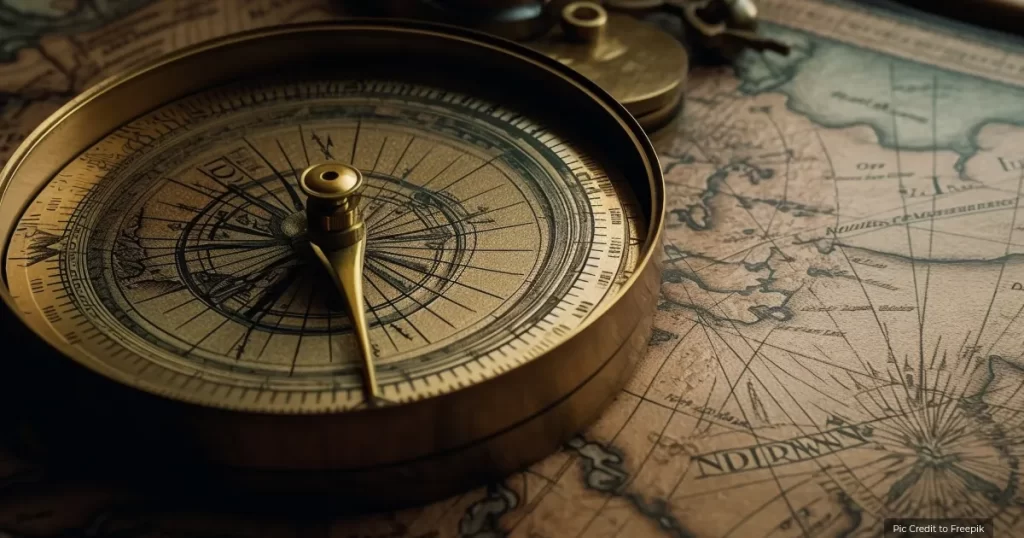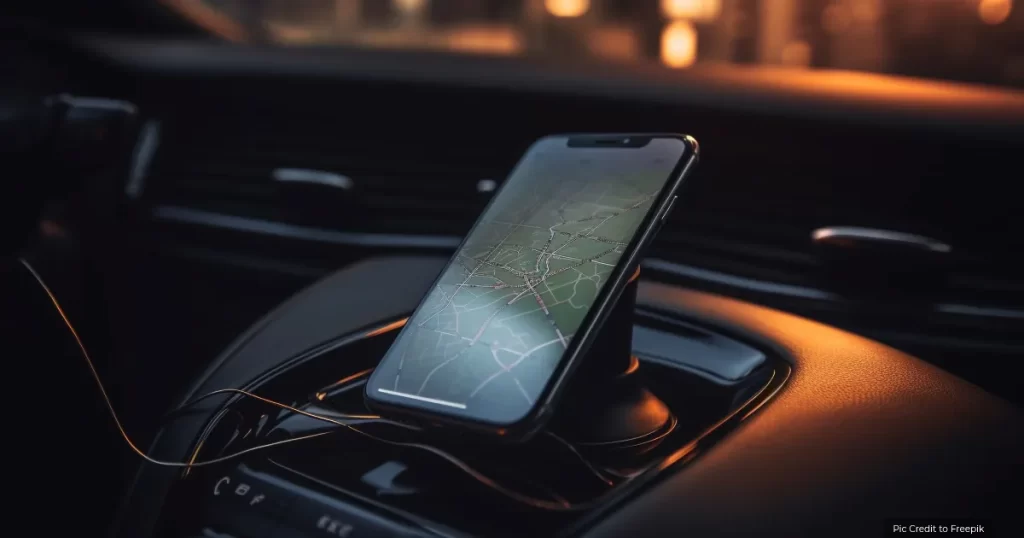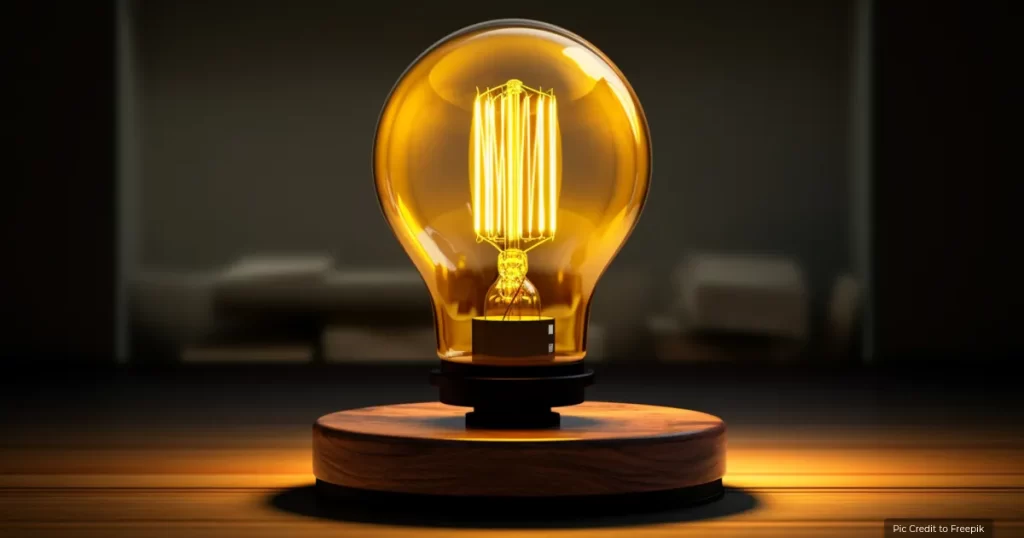Last Updated 1 month ago
Top 20+ Greatest Inventions – An invention is a novel device, process, method, or idea that is created by human ingenuity to solve a problem, fulfill a need, or achieve a specific goal. Inventions can range from simple tools and gadgets to complex technologies and systems. They often involve a combination of creativity, scientific knowledge, and engineering skills.
Inventions have played a crucial role in advancing human civilization, driving progress, and improving quality of life. They have revolutionized various aspects of society, including communication, transportation, healthcare, agriculture, industry, and entertainment. Some famous examples of inventions include the telephone, light bulb, airplane, computer, and internet.
Inventors are individuals who conceive, design, and develop new inventions. They may work independently or as part of research teams in various fields such as science, engineering, medicine, and technology. Patents are legal protections granted to inventors that give them exclusive rights to their inventions for a certain period, allowing them to benefit financially from their innovations and encourage further innovation.

How Does Invention Work
Invention typically involves a process of creativity, problem-solving, and innovation. Here’s a general overview of how the invention process works:
- Identifying a Need or Problem – The invention process often begins with identifying a specific need, problem, or opportunity. This could be something experienced in daily life, a challenge in a particular industry or field, or an unmet demand in the market.
- Research and Exploration – Once a need or problem is identified, inventors conduct research and explore existing solutions, technologies, and methodologies related to the problem. This phase may involve studying scientific principles, analyzing existing products or processes, and gathering information from various sources.
- Generating Ideas – Inventors brainstorm and generate ideas to address the identified need or problem. This involves thinking creatively, considering different approaches, and exploring potential solutions from multiple angles. Ideas may be inspired by insights gained from research, personal experiences, or observations.
- Concept Development – After generating ideas, inventors develop conceptual designs or prototypes of their inventions. This stage may involve sketching designs, creating models or prototypes, and refining concepts through experimentation and iteration.
- Evaluation and Testing – Inventions are evaluated and tested to assess their feasibility, effectiveness, and potential impact. Inventors conduct experiments, trials, or simulations to validate their ideas, identify strengths and weaknesses, and gather feedback from users or stakeholders.
- Refinement and Optimization – Based on the results of evaluation and testing, inventors refine and optimize their inventions to improve performance, functionality, and usability. This may involve making design modifications, adjusting parameters, or incorporating feedback to enhance the invention’s capabilities.
- Protection and Intellectual Property – Inventors may seek legal protection for their inventions through patents, copyrights, or trademarks. This helps protect their intellectual property rights and prevent unauthorized use or exploitation of their creations.
- Commercialization and Implementation – Once an invention is fully developed and protected, inventors may explore opportunities to commercialize or implement their inventions. This could involve licensing the technology to companies, launching startups, manufacturing products, or offering services based on the invention.
- Feedback and Iteration – The invention process is often iterative, with inventors continuously seeking feedback, iterating on their designs, and refining their inventions based on real-world usage and market dynamics. This ongoing cycle of innovation helps drive continuous improvement and adaptation over time.
Overall, the invention process is dynamic and multifaceted, involving a combination of creativity, research, experimentation, and collaboration to bring new ideas to life and make meaningful contributions to society.
List of 20+ Greatest Inventions That Change the World
Here’s a list of 20+ greatest inventions that have had a significant impact on the world –
Agriculture

Why Agriculture is Invented – Agriculture emerged as a means to secure a stable food supply for early human societies. By domesticating plants and animals, humans transitioned from a nomadic hunter-gatherer lifestyle to settled agricultural communities. Agriculture provided a reliable source of food, allowing for population growth, surplus production, and the development of complex societies.
It spurred technological innovation and social organization, shaping the course of human history. Ultimately, agriculture revolutionized human civilization by enabling the transition from subsistence living to the development of permanent settlements and the establishment of cultures and civilizations.
Who Invented Agriculture – The invention of agriculture is a complex process that occurred over thousands of years, involving various cultures and regions. It’s challenging to attribute it to a single individual or civilization. However, agriculture emerged independently in multiple regions around the world, including the Fertile Crescent, Mesoamerica, China, and the Andes.
The transition from hunting and gathering to farming likely began as communities started to cultivate and domesticate plants and animals for food around 10,000 to 12,000 years ago. While specific names are elusive, early agricultural practices laid the foundation for human civilization’s development, fundamentally altering human society, economy, and culture.
When Agriculture is Invented – The inception of agriculture, marking a pivotal moment in human history, occurred approximately 10,000 years ago. This momentous event revolutionized societal structures, transforming nomadic hunter-gatherer communities into settled civilizations. Agriculture enabled humans to cultivate crops and domesticate animals, leading to food surplus and the establishment of permanent settlements.
This transition facilitated the growth of complex societies, the development of technologies, and the advancement of culture and civilization. The invention of agriculture laid the foundation for the modern world, shaping human progress, economics, and environmental interactions profoundly, and remains one of the most significant milestones in our collective journey.
Where Agriculture is Invented – Agriculture is believed to have originated independently in multiple regions around the world. The earliest evidence of agricultural practices dates back to around 10,000 BCE in the Fertile Crescent region, encompassing parts of modern-day Iraq, Syria, Turkey, and Iran. In this region, early humans transitioned from a nomadic hunter-gatherer lifestyle to settled farming communities, cultivating crops such as wheat, barley, and legumes.
Additionally, agriculture emerged in other regions such as ancient China, Egypt, the Indus Valley, and Mesoamerica. These early agricultural societies laid the foundation for the development of civilization by providing food security and enabling population growth and specialization.
How Agriculture is Invented – Agriculture emerged around 10,000 years ago when humans transitioned from hunter-gatherer lifestyles to settled farming communities. It began as a response to the changing climate and environment at the end of the last Ice Age. Early humans recognized the potential of seeds found in wild plants and began intentionally cultivating them.
This marked the beginning of domestication, where plants and animals were selectively bred for desirable traits. Agriculture provided a more reliable food source, allowing populations to grow and settlements to flourish. Over time, techniques evolved, leading to the development of complex agricultural systems that sustain modern society. In the list of the top 20 Greatest Inventions in the World, Agriculture holds the 1st position.
Airplane

Why Airplane is Invented – The invention of the airplane revolutionized transportation, communication, and warfare. The Wright brothers, Orville and Wilbur, pioneered controlled, sustained flight on December 17, 1903. The airplane provided a faster, more efficient means of travel, shrinking distances and connecting people across continents. It facilitated trade, tourism, and cultural exchange, fostering global interconnectedness.
Additionally, airplanes played a crucial role in military operations, transforming warfare tactics and strategies. The invention of the airplane symbolizes human ingenuity, pushing the boundaries of exploration and innovation. It remains an essential aspect of modern life, shaping the way we perceive and interact with the world.
Who Invented the Airplane – The invention of the airplane is attributed to the Wright brothers, Orville and Wilbur Wright. In 1903, they successfully achieved controlled, sustained flight with their aircraft, the Wright Flyer, in Kitty Hawk, North Carolina, USA. Their breakthrough was marked by Orville piloting the Flyer for 12 seconds, covering a distance of 120 feet.
This achievement revolutionized transportation and paved the way for modern aviation. The Wright brothers’ innovative use of aerodynamic principles, coupled with their relentless experimentation and determination, solidified their place in history as the pioneers of powered flight, fundamentally altering human mobility and shaping the modern world.
When Airplane is Invented – The airplane was invented by Orville and Wilbur Wright in 1903. Their historic flight at Kitty Hawk, North Carolina, marked the first successful powered flight in history. The aircraft, known as the Wright Flyer, was a biplane with a wingspan of 12.3 meters and powered by a 12-horsepower engine.
The flight lasted just 12 seconds but paved the way for modern aviation. This groundbreaking achievement revolutionized transportation, commerce, and warfare, shrinking the world and enabling rapid travel and connectivity across vast distances. The Wright brothers’ invention remains one of the most significant milestones in human technological advancement.
Where Airplane is Invented – The invention of the airplane is credited to the Wright brothers, Orville and Wilbur Wright, who were American inventors and aviation pioneers. They conducted their groundbreaking experiments in Kitty Hawk, North Carolina, United States. On December 17, 1903, Orville Wright piloted the first powered airplane, the Wright Flyer, for a brief but significant flight, marking a milestone in human history.
Their meticulous research, engineering, and determination paved the way for modern aviation, revolutionizing transportation and shaping the course of technology and society. The Wright brothers’ achievement in Kitty Hawk remains an enduring symbol of human ingenuity and innovation.
How Airplane is Invented – The invention of the airplane is attributed to the Wright brothers, Orville and Wilbur. In December 1903, they achieved the first successful powered flight in Kitty Hawk, North Carolina. Their aircraft, the Wright Flyer, was a biplane powered by a gasoline engine. The brothers meticulously studied the principles of flight, experimented with gliders, and developed control mechanisms crucial for stable flight.
Their breakthrough included innovations in aerodynamics, propulsion, and control, paving the way for modern aviation. The Wright brothers’ achievement revolutionized transportation and sparked rapid advancements in aviation technology, marking a significant milestone in human history. In the list of the top 20 Greatest Inventions in the World, Airplaine holds the 2nd position.
Car

Why Car is Invented – The invention of the car revolutionized transportation, offering unprecedented mobility and freedom. Throughout history, various inventors contributed to the development of automobiles, but it was Karl Benz who is credited with creating the first practical, gasoline-powered vehicle in 1885. The car was invented to address the need for faster, more efficient means of travel, replacing slower modes like horse-drawn carriages.
It facilitated transportation of goods and people, expanded economic opportunities, and transformed society by shrinking distances. The car became an integral part of modern life, shaping urban landscapes, industries, and culture, ultimately changing the world forever.
Who Invented the Car – The invention of the automobile is a culmination of efforts from several inventors over time, but Karl Benz is widely credited with creating the first true automobile. In 1886, Benz patented the Benz Patent-Motorwagen, a three-wheeled vehicle powered by an internal combustion engine. This invention marked a significant milestone in transportation history, laying the foundation for modern automobiles.
While Benz is often singled out for his pioneering work, it’s essential to recognize the contributions of other inventors and engineers, such as Nikolaus Otto, Gottlieb Daimler, and Wilhelm Maybach, whose innovations in engine technology also played crucial roles in the development of the car.
When Car is Invented – The invention of the car revolutionized transportation. It is commonly credited to Karl Benz, who built the first practical automobile powered by an internal combustion engine in 1885. However, earlier versions and concepts of self-propelled vehicles existed. Benz’s creation, the Benz Patent-Motorwagen, marked a significant milestone with its reliability and usability.
This invention paved the way for countless advancements in mobility, shaping modern society and industry. Cars provided unparalleled freedom of movement, altered urban planning, and fueled economic growth. From humble beginnings, the car has evolved into a cornerstone of modern life, profoundly impacting transportation, culture, and commerce globally.
Where Car is Invented – The invention of the car is credited to Karl Benz, a German engineer, who built the first practical automobile powered by an internal combustion engine. In 1885, Benz designed and patented the Motorwagen, a three-wheeled vehicle with a rear-mounted single-cylinder engine. This invention revolutionized transportation, paving the way for modern automobiles.
Benz’s workshop in Mannheim, Germany, served as the birthplace of this groundbreaking innovation. The Motorwagen’s success laid the foundation for the automotive industry’s rapid growth and development worldwide. Today, Benz’s contribution is celebrated as a milestone in technological advancement and mobility.
How Car is Invented – The invention of the car was a culmination of various technological advancements. In the late 19th century, pioneers like Karl Benz, Gottlieb Daimler, and others developed the first practical gasoline-powered automobiles. These early vehicles were the result of innovations in internal combustion engines, such as the four-stroke engine, as well as developments in metallurgy for stronger chassis and more reliable components.
The introduction of the assembly line by Henry Ford in the early 20th century revolutionized car production, making automobiles more affordable and accessible to the masses. Combined efforts in engineering, innovation, and manufacturing led to the birth of the modern car. In the list of the top 20 Greatest Inventions in the World, Car holds the 3rd position.
Compass

Why Compass is Invented – The compass was invented to address the need for reliable navigation at sea. Prior to its invention, sailors relied on celestial navigation techniques, which were often unreliable due to factors like weather conditions and the difficulty of accurately locating stars. The compass, which utilizes Earth’s magnetic field to indicate direction, revolutionized maritime travel by providing a consistent and portable method for determining direction.
This innovation significantly improved navigation accuracy, enabling sailors to traverse vast distances with greater confidence and efficiency. Ultimately, the invention of the compass facilitated exploration, trade, and the expansion of civilizations by making long-distance sea travel more feasible and accessible.
Who Invented the Compass – The compass was invented in ancient China during the Han Dynasty (206 BCE – 220 CE). While the exact inventor is not definitively known, it’s commonly attributed to the Chinese polymath, scientist, and inventor, Shen Kuo (1031–1095 CE). However, earlier references to compass-like devices exist in Chinese texts dating back to the 4th century BCE.
The compass initially used a lodestone floating on water to align itself with Earth’s magnetic field. It revolutionized navigation, enabling sailors to determine direction accurately regardless of weather conditions or time of day. The compass played a pivotal role in the Age of Exploration, transforming global travel and trade.
When Compass is Invented – The compass, a device crucial for navigation, was invented during the Han Dynasty in China, around the 2nd century BCE. Initially known as the “south-pointer spoon” or “south-pointing fish,” it utilized the Earth’s magnetic field to indicate direction. Consisting of a magnetized needle floating in water, it aligned itself with the Earth’s magnetic poles, enabling travelers to determine north and south.
This invention revolutionized maritime exploration, trade, and navigation, shaping the course of history by facilitating global exploration and trade routes. The compass remains an indispensable tool in navigation, serving as a testament to humanity’s ingenuity and quest for exploration.
Where Compass is Invented – The compass, a fundamental navigational instrument, is believed to have been invented in ancient China during the Han Dynasty (206 BCE – 220 CE). It was initially developed as a tool for divination, using lodestone – a naturally magnetized iron ore – to align with the Earth’s magnetic field. This innovation revolutionized navigation by providing a reliable method for determining direction.
Chinese navigators extensively used compasses for maritime exploration and trade expeditions. Over time, the compass spread to other regions, influencing global navigation and exploration. Its invention in China stands as a pivotal moment in the history of technology and navigation.
How Compass is Invented – The invention of the compass is attributed to the Chinese during the Han Dynasty, around the 2nd century BCE. Initially, it was a simple lodestone floating in water, pointing towards the magnetic north. Later, a magnetized needle replaced the lodestone, allowing for more precise navigation. This innovation revolutionized maritime travel, enabling sailors to navigate accurately even when out of sight of land.
The compass played a crucial role in exploration, trade, and warfare, shaping world history by facilitating global trade routes and discoveries. Its development marked a significant milestone in human understanding of magnetism and navigation. In the list of the top 20 Greatest Inventions in the World, Compass holds the 4th position.
Computer

Why Computer is Invented – The computer was invented to automate complex calculations, streamline data processing, and enhance information storage and retrieval. Its origins trace back to the need for efficient computation, particularly in fields such as mathematics, science, and engineering. Early inventors like Charles Babbage envisioned mechanical devices to perform repetitive tasks, laying the groundwork for modern computing.
Over time, advancements in electronics, programming languages, and hardware design revolutionized the capabilities of computers, enabling diverse applications ranging from scientific research to business operations and entertainment. Ultimately, the computer’s invention aimed to augment human capabilities, facilitate problem-solving, and accelerate progress in various domains of human endeavor.
Who Invented the Computer – The invention of the computer is a culmination of contributions from various individuals throughout history. Charles Babbage is often credited with conceptualizing the first mechanical computer in the 19th century, although it was never fully built during his lifetime. Ada Lovelace, collaborating with Babbage, created algorithms for his proposed Analytical Engine, marking her as the world’s first computer programmer.
In the 20th century, pioneers like Alan Turing developed theoretical frameworks for computation. The modern electronic computer emerged during World War II, with significant contributions from figures like John Atanasoff, John Mauchly, and J. Presper Eckert, leading to the ENIAC, considered one of the earliest general-purpose electronic computers.
When Computer is Invented – The invention of the computer marks a pivotal moment in human history, revolutionizing how we process information. In the mid-20th century, pioneers such as Alan Turing, John von Neumann, and others laid the groundwork for computing. The first electronic general-purpose computer, ENIAC, was completed in 1945, paving the way for rapid advancements in digital technology.
Computers have since evolved from room-sized machines with limited capabilities to powerful devices that fit in our pockets. They have transformed industries, accelerated scientific discoveries, and reshaped communication and entertainment. The computer’s invention heralds a new era of innovation, connectivity, and endless possibilities.
Where Computer is Invented – The computer, as we know it today, is the result of numerous innovations and contributions from various individuals and organizations across different time periods and locations. However, one of the key milestones in its development is often attributed to the work of Alan Turing and his team at Bletchley Park in England during World War II.
Turing’s concept of a universal computing machine laid the groundwork for modern computers. Additionally, significant advancements were made in the United States, particularly with the development of the ENIAC at the University of Pennsylvania in the 1940s, marking another pivotal moment in the history of computing.
How Computer is Invented – The invention of the computer evolved over centuries, but the modern digital computer traces its roots to the mid-20th century. Key milestones include Charles Babbage’s conceptual designs in the 19th century, Alan Turing’s theoretical work on computation, and the development of electronic components like vacuum tubes and transistors.
ENIAC, completed in 1945, is often considered the first fully electronic general-purpose computer. Further advancements led to the creation of smaller, faster, and more powerful computers, eventually culminating in the personal computer revolution of the 1970s and 1980s. Today, computers are integral to virtually every aspect of modern life. In the list of the top 20 Greatest Inventions in the World, Computer holds the 5th position.
Digital Camera

Why Digital Camera is Invented – The invention of the digital camera revolutionized photography by allowing images to be captured and stored digitally rather than on traditional film. This innovation brought numerous benefits, including instant image review, easier sharing and distribution, and the ability to manipulate photos digitally. Digital cameras also eliminated the need for costly film processing and made photography more accessible to a wider audience.
The advancement of digital technology further enhanced image quality, resolution, and functionality, leading to the integration of cameras into various devices such as smartphones, tablets, and computers. Overall, the digital camera’s invention marked a significant milestone in the evolution of photography.
Who Invented the Digital Camera – The digital camera was invented by Steven Sasson, an engineer at Eastman Kodak, in 1975. He created the first prototype which weighed around 8 pounds and captured black and white images at a resolution of 0.01 megapixels. Sasson’s invention utilized a CCD (charge-coupled device) sensor to convert light into digital information.
Despite its primitive capabilities compared to modern digital cameras, Sasson’s invention laid the groundwork for the digital imaging revolution that followed. His pioneering work marked a significant shift in photography, eventually leading to the widespread adoption of digital cameras in the late 20th and early 21st centuries.
When Digital Camera is Invented – The digital camera was invented in the late 20th century, marking a revolutionary shift in photography. Its inception can be traced back to the 1970s and 1980s, with various prototypes and developments by different researchers and engineers. However, it wasn’t until the 1990s that commercially viable digital cameras began to emerge.
One of the pioneering models was the Kodak DCS series, introduced in 1991, which combined a Nikon F-3 camera with digital imaging technology. This innovation marked the beginning of the digital photography era, fundamentally altering how images are captured, stored, and shared worldwide.
Where Digital Camera is Invented – The digital camera was invented primarily through collaborative efforts spanning multiple countries and companies. However, its origins can be traced back to the United States and Eastman Kodak Company. In 1975, Kodak engineer Steven Sasson created the first digital camera prototype, which utilized a CCD sensor to capture images digitally.
This breakthrough marked the beginning of digital imaging technology. Over the following decades, advancements and innovations from various countries, including Japan, Germany, and the United States, contributed to the evolution and commercialization of digital cameras, revolutionizing photography and imaging worldwide.
How Digital Camera is Invented – The invention of the digital camera can be traced back to the late 20th century. The concept of digital imaging began with Steven Sasson, an engineer at Eastman Kodak, who created the first digital camera prototype in 1975. This early camera used a CCD sensor to capture images and stored them digitally on a cassette tape.
Over the following decades, advancements in sensor technology, image processing, and storage capabilities led to the development of consumer-friendly digital cameras. Companies like Canon, Nikon, and Sony played significant roles in refining and popularizing digital photography, ultimately revolutionizing how images are captured and shared. In the list of the top 20 Greatest Inventions in the World, Digital Camera holds the 6th position.
Electricity

Why Electricity is Invented – Electricity wasn’t “invented” per se, but rather understood, harnessed, and utilized by humans over time. Its discovery is attributed to various scientists and inventors across centuries, including Benjamin Franklin, Alessandro Volta, and Michael Faraday. Franklin’s experiments with lightning and Volta’s invention of the voltaic pile contributed to understanding its properties.
Faraday’s work on electromagnetic induction laid the groundwork for practical applications. Electricity revolutionized communication, transportation, industry, and daily life, powering everything from light bulbs to computers. Its invention, or rather comprehension, fundamentally altered human society, ushering in the modern age of technology and progress.
Who Invented the Electricity – The invention of electricity cannot be credited to a single individual. Its understanding and application have evolved over centuries through the work of numerous scientists, inventors, and researchers. Key figures include Benjamin Franklin, who famously experimented with lightning and electricity in the 18th century;
Michael Faraday, whose discoveries laid the groundwork for modern electrical technology in the 19th century; and Thomas Edison, known for his development of practical electrical systems such as the light bulb and power distribution. Nikola Tesla also made significant contributions to the understanding and utilization of electricity, particularly in alternating current (AC) systems.
When Electricity is Invented – The understanding and practical application of electricity evolved over centuries. Key milestones include the discovery of static electricity by ancient Greeks, experiments with lightning by Benjamin Franklin in the 18th century, and Alessandro Volta’s invention of the voltaic pile in 1800, which laid the groundwork for modern batteries.
Michael Faraday’s work in the early 19th century on electromagnetism and electric currents further advanced our understanding. Ultimately, Thomas Edison’s development of practical electric lighting systems in the late 19th century marked a significant milestone in the utilization of electricity.
Where Electricity is Invented – The understanding and application of electricity evolved over time through various contributions from scientists and inventors worldwide. One of the key figures in this development was Benjamin Franklin, who famously conducted experiments with lightning and static electricity in the 18th century.
Additionally, Alessandro Volta’s invention of the electric battery in the late 18th century and Michael Faraday’s work on electromagnetic induction in the 19th century were pivotal moments in the advancement of electrical science.
How Electricity is Invented – Ancient cultures like the Greeks observed static electricity from rubbing amber. Later, in the 18th century, Benjamin Franklin’s experiments with lightning and kites led to understanding electricity’s properties. Michael Faraday’s work in the 19th century established the basis of electromagnetism and electrical induction, paving the way for practical applications.
Thomas Edison’s invention of the light bulb and Nikola Tesla’s contributions to alternating current (AC) distribution further revolutionized its use. Ultimately, electricity evolved through a combination of scientific inquiry, experimentation, and technological innovation rather than a single “invention.” In the list of the top 20 Greatest Inventions in the World, Electricity holds the 7th position.
GPS

Why GPS is Invented – GPS, or Global Positioning System, was developed primarily for military purposes by the United States Department of Defense. It was conceived to provide accurate positioning, navigation, and timing information to military personnel and assets worldwide. GPS allows precise determination of location, velocity, and time synchronization using signals transmitted from satellites orbiting the Earth.
Over time, its applications expanded beyond the military to include civilian uses such as navigation, mapping, surveying, and precise timing in various industries. The invention of GPS revolutionized navigation, offering unparalleled accuracy and reliability, and has become an indispensable tool in both military and civilian sectors.
Who Invented the GPS – The Global Positioning System (GPS) was developed by the United States Department of Defense. Its conception dates back to the 1960s and 1970s, with research led by Dr. Ivan A. Getting and his team at the Aerospace Corporation.
However, the system’s full implementation and deployment were achieved through collaborative efforts involving many scientists, engineers, and organizations, including the Naval Research Laboratory, Air Force Space Command, and various contractors. While no single individual can be credited with inventing GPS, it was the result of decades of research, development, and innovation by numerous experts in the field of navigation and satellite technology.
When GPS is Invented – GPS, or Global Positioning System, was developed by the United States Department of Defense and became fully operational in 1995. It utilizes a network of satellites to provide precise location and time information anywhere on Earth. Originally intended for military use, GPS quickly found civilian applications in navigation, surveying, and various industries.
Its widespread adoption revolutionized navigation, allowing individuals to pinpoint their exact location with unprecedented accuracy. From guiding travelers on unfamiliar roads to enabling precision agriculture and disaster relief efforts, GPS has become an integral part of modern life, facilitating countless activities and enhancing safety and efficiency worldwide.
Where GPS is Invented – The Global Positioning System (GPS) was developed primarily in the United States. It originated from the efforts of the U.S. Department of Defense in the 1970s and became fully operational in 1995. The concept of satellite-based navigation systems was initially explored by the U.S. military to enhance their capabilities in various applications.
GPS works by utilizing a network of satellites to provide location and time information anywhere on Earth. Over time, it has evolved into a crucial technology with widespread civilian applications, including navigation, mapping, transportation, agriculture, and more, revolutionizing how we navigate and interact with the world around us.
How GPS is Invented – The Global Positioning System (GPS) was developed by the United States Department of Defense in the 1970s and became fully operational in 1995. It utilizes a constellation of satellites orbiting Earth to provide location and time information to users anywhere on the planet. GPS works by calculating the distance between the satellites and a receiver on the ground, using trilateration to pinpoint the receiver’s exact location.
Originally designed for military applications, GPS has since become a crucial tool in civilian navigation, transportation, surveying, and countless other industries, revolutionizing how we navigate and understand our world. In the list of the top 20 Greatest Inventions in the World, GPS holds the 8th position.
Gunpowder

Why Gunpowder is Invented – Gunpowder was invented in ancient China during the 9th century. Its creation is credited to alchemists searching for an elixir of immortality. Initially discovered by accident while experimenting with various chemical compounds, gunpowder’s explosive properties were soon recognized.
Initially used in fireworks and later in weaponry, gunpowder revolutionized warfare by enabling the development of firearms such as cannons and muskets. Its invention significantly altered the course of history, shaping conflicts and strategies across the globe. The quest for immortality inadvertently led to the creation of one of the most influential and transformative inventions in human history.
Who Invented the Gunpowder – Gunpowder is attributed to Chinese alchemists during the Tang dynasty, circa 9th century AD. While its exact inventor remains unknown, it’s believed to have emerged from experiments to create an elixir of immortality. Initially used for fireworks, it evolved into military applications by the Song dynasty (10th century).
Its formula, consisting of saltpeter, charcoal, and sulfur, revolutionized warfare worldwide. The Mongols spread its use to Europe in the 13th century, transforming military tactics. Gunpowder’s impact reshaped history, contributing to the rise and fall of empires, colonization, and technological advancements, fundamentally altering the nature of warfare and human civilization.
When Gunpowder is Invented – Gunpowder, an explosive mixture of saltpeter, charcoal, and sulfur, revolutionized warfare upon its invention around the 9th century in China. Initially used in fireworks, its military application rapidly spread. By the 10th century, it was employed in primitive firearms like fire lances and later in cannons.
Its use drastically altered the dynamics of warfare, shifting power from traditional melee combat to ranged artillery. Gunpowder played a pivotal role in the Mongol conquests, European exploration, and ultimately shaped the course of history, influencing tactics, fortifications, and the very nature of conflict itself.
Where Gunpowder is Invented – Gunpowder is believed to have been invented in China during the 9th century, most likely by Taoist alchemists searching for an elixir of immortality. It was initially used for fireworks and later evolved into weaponry.
The exact originator is uncertain, but it’s commonly attributed to Chinese alchemist Taoist monk Li Tian, who accidentally discovered it while experimenting with various substances. By combining sulfur, charcoal, and saltpeter (potassium nitrate), they created the earliest form of gunpowder, a discovery that revolutionized warfare, leading to the development of firearms and altering the course of history.
How Gunpowder is Invented – Gunpowder, historically known as black powder, was invented in China during the 9th century. Its precise origins are obscured, but it’s believed to have been discovered accidentally by Chinese alchemists searching for an elixir of immortality. The fundamental components of gunpowder are saltpeter (potassium nitrate), charcoal, and sulfur, mixed in specific proportions.
These ingredients were initially used in fireworks and later adapted for military applications such as firearms and cannons. Gunpowder’s invention revolutionized warfare and played a significant role in shaping world history, influencing military tactics, conquests, and technological advancements. In the list of the top 20 Greatest Inventions in the World, Gunpowder holds the 9th position.
Internet

Why Internet is Invented – The internet was invented to facilitate communication and information sharing on a global scale. Originally developed as a means for military and academic institutions to exchange data, it rapidly evolved into a public network accessible to individuals and businesses worldwide.
The internet revolutionized how people communicate, conduct research, collaborate, and conduct business. Its invention democratized access to information, breaking down geographical barriers and connecting people across continents. Additionally, the internet has spurred innovation in countless fields, from technology and education to healthcare and entertainment, fundamentally transforming modern society and shaping the way we live and interact.
Who Invented the Internet – The invention of the internet is attributed to multiple individuals and organizations, with contributions spanning decades. Key figures include computer scientists such as Vinton Cerf, who co-designed the TCP/IP protocols, and Robert Kahn, who worked on the development of ARPANET, a precursor to the internet. Tim Berners-Lee created the World Wide Web, providing a user-friendly interface for accessing internet resources.
Additionally, advancements by researchers at institutions like MIT and UCLA played crucial roles. The internet’s evolution involved collaborative efforts, standardization, and technological innovations, making it challenging to attribute its invention to a single person or entity.
When Internet is Invented – The internet as we know it today began to take shape in the late 1960s with the development of ARPANET, a network funded by the U.S. Department of Defense. This precursor to the internet allowed for the exchange of data between research institutions. Over the following decades, advancements in networking technologies and protocols such as TCP/IP facilitated the expansion of the internet, connecting millions of computers worldwide.
By the early 1990s, the World Wide Web emerged, revolutionizing how information is accessed and shared. Since then, the internet has become an indispensable tool for communication, commerce, and information dissemination globally.
Where Internet is Invented – The internet, as we know it today, was not invented in a single location but rather evolved through contributions from numerous individuals and institutions over several decades. Its origins can be traced back to various projects and developments, including ARPANET in the United States, which was initiated by the U.S. Department of Defense in the late 1960s.
Other key contributions came from researchers and engineers around the world, such as Tim Berners-Lee’s creation of the World Wide Web in 1989 at CERN in Switzerland. Thus, the internet’s invention is a collaborative effort that transcends geographical boundaries.
How Internet is Invented – The internet’s inception dates back to the 1960s with ARPANET, a U.S. Department of Defense project aiming to create a decentralized communication network resilient to nuclear attacks. Developed by researchers like Leonard Kleinrock, Paul Baran, and Vint Cerf, ARPANET pioneered packet switching, breaking data into packets for efficient transmission.
In 1989, Tim Berners-Lee proposed the World Wide Web, introducing HTTP and HTML to share information globally. This laid the groundwork for modern internet protocols. Over decades, technological advancements and collaborations among scientists, engineers, and institutions worldwide propelled the internet’s evolution into the ubiquitous network shaping our digital age. In the list of the top 20 Greatest Inventions in the World, Internet holds the 10th position.
Laser

Why Laser is Invented – The invention of the laser stemmed from scientific curiosity and the pursuit of technological advancement. In 1958, physicist Charles Townes and his colleagues at Bell Labs developed the concept of the laser (Light Amplification by Stimulated Emission of Radiation) while investigating microwave amplification.
The laser promised a highly concentrated beam of coherent light, with myriad potential applications across various fields including telecommunications, medicine, industry, and research. Its invention revolutionized numerous industries, enabling innovations like fiber optics, barcode scanners, laser surgery, and more. Ultimately, the laser’s invention was driven by the desire to harness light in a controlled and powerful manner for practical purposes.
Who Invented the Laser – The laser was invented by physicist Theodore H. Maiman in 1960. Maiman created the first functional laser at Hughes Research Laboratories in California, using a synthetic ruby crystal as the medium. Unlike previous attempts, Maiman’s laser produced a coherent beam of light by stimulating the ruby with intense flashes of light from a high-powered lamp, causing it to emit photons in a concentrated, synchronized manner.
This groundbreaking achievement marked the birth of a revolutionary technology with applications ranging from telecommunications and surgery to manufacturing and entertainment, fundamentally transforming various industries and scientific fields.
When Laser is Invented – The laser, short for “light amplification by stimulated emission of radiation,” was first invented in 1960 by Theodore H. Maiman, an American physicist. Maiman’s creation marked a groundbreaking milestone in the field of optics and technology. The laser operates by emitting a highly concentrated beam of light with properties such as coherence, monochromaticity, and directionality.
Its invention has revolutionized various industries, including medicine, telecommunications, manufacturing, and scientific research. Lasers are utilized in diverse applications, ranging from surgery and barcode scanning to optical disc drives and cutting-edge scientific experiments. Maiman’s pioneering work laid the foundation for countless innovations and advancements in laser technology.
Where Laser is Invented – The laser, short for “light amplification by stimulated emission of radiation,” was invented in 1960 by American physicist Theodore H. Maiman. Working at Hughes Research Laboratories in California, Maiman successfully constructed the first working laser using a synthetic ruby crystal as the medium.
This breakthrough marked a significant advancement in the field of optics and has since led to numerous applications across various industries, including telecommunications, medicine, manufacturing, and research. Maiman’s pioneering work laid the foundation for the development of laser technology, revolutionizing how we generate and manipulate light for practical purposes.
How Laser is Invented – The invention of the laser (Light Amplification by Stimulated Emission of Radiation) is credited to physicist Theodore Maiman in 1960. Maiman constructed the first working laser by using a synthetic ruby crystal to produce a concentrated beam of coherent light. The concept of stimulated emission, crucial to laser operation, was proposed by Albert Einstein in 1917.
Maiman’s groundbreaking work demonstrated the practical realization of Einstein’s theory. The laser’s ability to produce a narrow, intense beam of light revolutionized various fields including communications, medicine, industry, and research, making it one of the most transformative inventions of the 20th century. In the list of the top 20 Greatest Inventions in the World, Laser holds the 11th position.
Light Bulb

Why Light Bulb is Invented – The invention of the light bulb revolutionized human existence, fundamentally altering how we live and work. Prior to its invention, lighting was predominantly provided by candles, oil lamps, or gas lamps, which were inefficient and often hazardous. The need for a safer, more reliable, and longer-lasting source of light prompted inventors like Thomas Edison and Joseph Swan to pursue the development of the electric light bulb.
By the late 19th century, their efforts culminated in the creation of practical incandescent bulbs, marking a significant milestone in human history and paving the way for countless technological advancements and improvements in quality of life.
Who Invented the Light Bulb – The invention of the light bulb is attributed to multiple inventors. However, Thomas Edison is widely credited for creating the first commercially viable incandescent light bulb in 1879. Edison’s bulb used a carbon filament in a vacuum-sealed glass bulb, which lasted longer and was more practical than previous designs.
Edison’s work significantly contributed to the widespread adoption of electric lighting, revolutionizing homes and industries worldwide. While others, like Joseph Swan and Humphry Davy, also made significant contributions to the development of the light bulb, Edison’s efforts are most commonly associated with its invention.
When Light Bulb is Invented – The invention of the light bulb is attributed to Thomas Edison, who patented his version in 1879. Edison’s innovation revolutionized society by providing a reliable and efficient source of artificial light, replacing older, less practical methods like gas lamps and candles. By passing electricity through a thin filament inside a vacuum-sealed glass bulb, the light bulb produced illumination without the hazards associated with previous lighting technologies.
This invention spurred advancements in various industries, transformed urban landscapes, and fundamentally changed how people lived, worked, and interacted, marking a significant milestone in human history and technological progress.
Where Light Bulb is Invented – The invention of the light bulb is attributed to Thomas Edison, who developed the first practical incandescent light bulb in 1879. Edison’s breakthrough came after years of experimentation with various materials for the filament and gases inside the bulb. His successful design utilized a carbonized bamboo filament, which lasted longer and provided a more stable light than previous attempts.
This invention revolutionized society by providing a reliable and accessible source of artificial light, significantly impacting various industries and daily life worldwide. Edison’s innovation marked a pivotal moment in history, laying the groundwork for modern lighting technology.
How Light Bulb is Invented – The invention of the light bulb is credited to Thomas Edison, who, through years of experimentation and innovation, developed the first practical and commercially viable electric light bulb in 1879. Edison and his team tested thousands of materials for the filament until they found one that could withstand high temperatures and produce light for extended periods.
He utilized a carbonized bamboo filament inside a vacuum-sealed glass bulb, which prevented the filament from burning out quickly. This breakthrough revolutionized indoor lighting, paving the way for widespread electrification and fundamentally changing daily life and industry worldwide. In the list of the top 20 Greatest Inventions in the World, Light Bulb holds the 12th position.
Microwave Oven

Why Microwave Oven is Invented – The microwave oven was invented to provide a quick and efficient method for cooking and heating food. It utilizes microwave radiation to agitate water molecules within food, generating heat through dielectric heating. Percy Spencer, an engineer at Raytheon Corporation, accidentally discovered this technology in 1945 when he noticed a candy bar in his pocket melted while he was working on magnetrons, a key component of radar systems.
Recognizing the potential, Spencer experimented further and eventually developed the first microwave oven. Its invention revolutionized cooking by drastically reducing cooking times and offering convenience, making it a staple appliance in kitchens worldwide.
Who Invented the Microwave Oven – The microwave oven was invented by Percy Spencer, an American engineer and physicist, in 1945. Spencer was working on radar-related research for the Raytheon Corporation when he noticed a candy bar in his pocket had melted due to exposure to microwave radiation emitted by a magnetron, a vacuum tube used in radar systems.
This observation led him to experiment further, eventually leading to the development of the first microwave oven. Raytheon patented Spencer’s microwave cooking process, and the first commercial microwave oven, the “Radarange,” was introduced in 1947. Spencer’s invention revolutionized cooking by offering a quick and efficient method of heating food.
When Microwave Oven is Invented – The microwave oven was invented in 1946 by Percy Spencer, an American engineer working for Raytheon Corporation. While conducting experiments with radar equipment, Spencer noticed that a candy bar in his pocket had melted due to microwave radiation. Intrigued, he experimented further and realized that microwave radiation could cook food quickly and efficiently.
This led to the development of the first commercial microwave oven, called the “Radarange,” which was introduced in 1947. Initially, microwave ovens were large and expensive, primarily used in commercial settings like restaurants. However, by the 1960s, they became smaller and more affordable, making them a common household appliance.
Where Microwave Oven is Invented – The microwave oven was invented in 1945 by Percy Spencer, an engineer working for the Raytheon Corporation, in the United States. While conducting experiments with radar technology, Spencer noticed that a candy bar in his pocket had melted due to exposure to microwaves emitted by the radar equipment. This observation led him to further experiments, ultimately resulting in the invention of the microwave oven.
Raytheon patented Spencer’s invention in 1945, and the first commercial microwave oven, the Radarange, was introduced in 1947. Since then, the microwave oven has become a ubiquitous appliance found in kitchens worldwide, revolutionizing cooking methods with its quick and efficient heating capabilities.
How Microwave Oven is Invented – The microwave oven was invented by Percy Spencer, an engineer at Raytheon Corporation, in 1946. While working on radar equipment, Spencer noticed that a candy bar in his pocket had melted due to the microwave radiation emitted by the radar equipment. Intrigued, he experimented further and discovered that microwaves could cook food quickly and efficiently.
Spencer then developed the first microwave oven by placing food between two metal surfaces and exposing it to microwave radiation. This invention revolutionized cooking methods, leading to the commercialization of microwave ovens in the late 1940s and their widespread adoption in households worldwide. In the list of the top 20 Greatest Inventions in the World, Microwave holds the 13th position.
Mobile Phones

Why Mobile Phones is Invented – Mobile phones were invented to provide convenient communication on the go. Initially conceived as a tool for voice communication, they have evolved into multifunctional devices encompassing messaging, internet access, photography, and more. The need for instant communication regardless of location drove their invention, enabling individuals to stay connected and accessible at all times.
Mobile phones have revolutionized how people interact, conduct business, and access information, becoming an indispensable aspect of modern life. Their portability, accessibility, and versatility have made them essential tools for both personal and professional use, facilitating seamless communication and connectivity across the globe.
Who Invented the Mobile Phones – The invention of the mobile phone can be attributed to a collaboration of several innovators and engineers over time. However, Martin Cooper, an engineer at Motorola, is widely credited with making the first handheld mobile phone call in 1973. Cooper’s prototype, the Motorola DynaTAC, weighed about 2.4 pounds and resembled a large brick.
It wasn’t until 1983 that the first commercially available mobile phone, the Motorola DynaTAC 8000X, was released, ushering in the era of mobile communication. Since then, numerous advancements by various individuals and companies have contributed to the evolution of mobile phones into the ubiquitous devices we rely on today.
When Mobile Phones is Invented – The development of mobile phones began in the early 20th century. However, it wasn’t until 1973 that the first handheld mobile phone call was made by Martin Cooper, an engineer at Motorola. This marked the birth of the modern mobile phone. Over the years, mobile phones have undergone significant advancements in technology, design, and functionality.
From bulky devices with limited capabilities to sleek smartphones capable of performing a myriad of tasks, mobile phones have revolutionized communication, entertainment, and productivity, becoming an indispensable part of everyday life for billions of people worldwide.
Where Mobile Phones is Invented – The mobile phone, as we know it today, traces its roots to several developments across the globe. However, the first handheld mobile phone was invented by Martin Cooper, a researcher at Motorola, in 1973. Cooper made the historic call from a Motorola DynaTAC, commonly known as the “brick phone.”
While Motorola’s headquarters were in Schaumburg, Illinois, USA, the invention itself was a culmination of efforts by engineers and scientists worldwide. Over time, mobile phone technology has evolved through contributions from various countries, including Japan, Finland, and Sweden, shaping the global telecommunications landscape we experience today.
How Mobile Phones is Invented – The invention of mobile phones can be traced back to the early 20th century, with developments in radio communication. However, the modern mobile phone as we know it today emerged in the late 20th century. In 1973, Motorola engineer Martin Cooper made the first handheld mobile phone call using a prototype device.
Over the following decades, advancements in technology miniaturized components, improved battery life, and enhanced network infrastructure, leading to the widespread adoption of mobile phones. The evolution continues, with smartphones now serving as multifunctional devices integral to modern life, reshaping communication, entertainment, and productivity. In the list of the top 20 Greatest Inventions in the World, Mobile Phones holds the 14th position.
MRI

Why MRI is Invented – Magnetic Resonance Imaging (MRI) was invented to provide detailed images of the internal structures of the human body without invasive procedures or ionizing radiation. It utilizes powerful magnets and radio waves to create high-resolution images of tissues, organs, and bones.
Developed in the 1970s by Paul Lauterbur and Sir Peter Mansfield, MRI revolutionized medical diagnostics by offering superior soft tissue contrast and the ability to visualize complex anatomical structures. Its non-invasive nature makes it invaluable for diagnosing a wide range of conditions, including tumors, neurological disorders, joint injuries, and cardiovascular diseases, leading to better patient outcomes and treatment planning.
Who Invented the MRI – The invention of MRI (Magnetic Resonance Imaging) is credited to Paul Lauterbur, an American chemist, and Sir Peter Mansfield, a British physicist. Lauterbur, in 1971, proposed the idea of using magnetic fields to create images, pioneering the concept of MRI. Mansfield, in the following years, made significant contributions to the development of MRI technology, particularly in refining imaging techniques.
Together, their work laid the foundation for modern MRI machines, revolutionizing medical diagnosis and research. In recognition of their groundbreaking contributions, Lauterbur and Mansfield were jointly awarded the Nobel Prize in Physiology or Medicine in 2003.
When MRI is Invented – Magnetic Resonance Imaging (MRI) revolutionized medical diagnostics when it was invented in the early 1970s. Pioneered by Paul Lauterbur and Sir Peter Mansfield, MRI utilizes powerful magnets and radio waves to produce detailed images of the body’s internal structures. Unlike traditional X-rays, MRI does not use ionizing radiation, making it safer for patients.
Its unparalleled ability to visualize soft tissues, organs, and even neurological structures has made it indispensable in diagnosing various medical conditions, including tumors, injuries, and neurological disorders. Since its inception, MRI technology has continually advanced, enhancing its precision, speed, and accessibility in healthcare settings worldwide.
Where MRI is Invented – Magnetic Resonance Imaging (MRI) was developed through collaborative efforts spanning several countries. The foundational principles were established by Felix Bloch and Edward Mills Purcell in the United States, who independently discovered nuclear magnetic resonance (NMR) phenomena in the 1940s.
The application of NMR to medical imaging began in the early 1970s when Raymond Damadian, also in the United States, conducted pioneering research leading to the first MRI scanner. However, it was Paul Lauterbur and Peter Mansfield, working in the United States and the United Kingdom respectively, who developed key techniques enabling the production of 2D and 3D images, laying the groundwork for modern MRI technology.
How MRI is Invented – The development of MRI (Magnetic Resonance Imaging) began in the early 1970s, building upon discoveries in nuclear magnetic resonance (NMR) spectroscopy. In 1971, Raymond Damadian first suggested that NMR could be used to differentiate between healthy and diseased tissue.
Paul Lauterbur and Peter Mansfield later pioneered techniques for producing cross-sectional images using magnetic gradients, leading to the first MRI images in 1973. Their work laid the foundation for modern MRI technology, which utilizes powerful magnets and radio waves to create detailed images of internal body structures without the use of ionizing radiation, revolutionizing medical diagnostics. In the list of the top 20 Greatest Inventions in the World, MRI holds the 14th position.
Nuclear Power

Why Nuclear Power is Invented – Nuclear power was developed primarily to generate electricity. This technology harnesses the energy released during nuclear fission, where atomic nuclei split, releasing immense amounts of heat. This heat is then used to produce steam, driving turbines connected to generators to generate electricity.
It offers a highly efficient and reliable source of energy with low greenhouse gas emissions compared to fossil fuels. Additionally, nuclear power can provide a consistent energy supply, reducing dependence on fluctuating fuel prices and contributing to energy security. Despite concerns over safety and nuclear waste disposal, it remains a significant component of many countries’ energy portfolios.
Who Invented the Nuclear Power – Nuclear power’s development is attributed to various scientists and engineers, but its theoretical groundwork can be traced back to Albert Einstein’s famous equation E=mc², which laid the foundation for understanding nuclear energy. The practical application of this theory came with the work of Enrico Fermi and his team, who achieved the first controlled nuclear chain reaction in 1942, known as the Chicago Pile-1.
This pivotal event paved the way for subsequent advancements, leading to the development of nuclear reactors for power generation. While Fermi played a crucial role, nuclear power’s invention was a collaborative effort involving many scientists and engineers over decades.
When Nuclear Power is Invented – Nuclear power, a breakthrough in energy generation, emerged in the mid-20th century. Its birth can be attributed to scientific pioneers like Enrico Fermi and Otto Hahn. In 1942, Fermi orchestrated the first controlled nuclear chain reaction, laying the groundwork for harnessing nuclear energy.
Subsequent developments, such as the Manhattan Project, accelerated progress, leading to the construction of the first nuclear reactors in the late 1940s. This innovation promised abundant, clean energy, yet also brought profound challenges, including safety concerns and nuclear proliferation fears. Despite these complexities, nuclear power has become a significant component of the global energy landscape, shaping the modern world.
Where Nuclear Power is Invented – Nuclear power was conceptualized and developed primarily in the United States during the mid-20th century. The groundbreaking work of scientists such as Enrico Fermi, who achieved the first controlled nuclear chain reaction in 1942 at the University of Chicago, laid the foundation for the subsequent development of nuclear power technology.
This breakthrough paved the way for the construction of the world’s first nuclear power plant, the Experimental Breeder Reactor I, which went online in Idaho in 1951. Subsequently, the development and deployment of nuclear power technology spread globally, with various countries adapting and expanding upon these early innovations.
How Nuclear Power is Invented – Nuclear power was born from scientific breakthroughs in the early 20th century, notably with the discovery of nuclear fission by scientists like Otto Hahn and Fritz Strassmann in 1938. This revelation laid the groundwork for harnessing the immense energy released when atomic nuclei split. Further advancements by Enrico Fermi and his team led to the first controlled nuclear chain reaction in 1942, marking a crucial milestone.
Subsequent research and engineering efforts refined the technology, culminating in the development of the first nuclear power reactors in the 1950s. This innovative approach to generating electricity has since evolved, providing a significant portion of global energy production. In the list of the top 20 Greatest Inventions in the World, Nuclear Power holds the 15th position.
Penicillin

Why Penicillin is Invented – Penicillin was discovered by Alexander Fleming in 1928 when he noticed that a mold, Penicillium, inhibited bacterial growth. Its invention revolutionized medicine by introducing the first antibiotic, effectively treating bacterial infections. Penicillin’s development accelerated during World War II, saving countless lives by combating infections among soldiers.
Its significance lies in its ability to target bacterial infections without harming human cells, making it a cornerstone of modern medicine. The invention of penicillin marked a pivotal moment in healthcare, establishing the era of antibiotics and significantly reducing mortality rates associated with bacterial diseases.
Who Invented the Penicillin – Penicillin, the first antibiotic drug, was not invented, but rather discovered by Scottish bacteriologist Alexander Fleming in 1928. While working at St. Mary’s Hospital in London, Fleming noticed that a mold called Penicillium notatum had contaminated one of his petri dishes, inhibiting the growth of bacteria.
This serendipitous observation led to the realization that the mold produced a substance capable of killing bacteria, which he named penicillin. Fleming’s discovery revolutionized medicine, ushering in the era of antibiotics and saving countless lives by effectively treating bacterial infections. He was awarded the Nobel Prize in Physiology or Medicine in 1945 for his groundbreaking work.
When Penicillin is Invented – Penicillin, the first widely used antibiotic, was discovered in 1928 by Scottish bacteriologist Alexander Fleming. While conducting experiments with Staphylococcus bacteria, Fleming observed that a mold called Penicillium notatum had contaminated one of his petri dishes and inhibited bacterial growth around it.
This serendipitous observation led to the recognition of penicillin’s potential as an antibacterial agent. However, its full medical application wasn’t realized until the 1940s, during World War II. Penicillin revolutionized medicine, dramatically reducing mortality rates from bacterial infections and paving the way for the development of numerous other antibiotics.
Where Penicillin is Invented – Penicillin, the first widely used antibiotic, was discovered by Scottish bacteriologist Alexander Fleming in 1928. While working at St. Mary’s Hospital in London, Fleming observed that a mold called Penicillium notatum had antibacterial properties. He famously noticed that this mold inhibited the growth of bacteria on a petri dish.
This chance discovery revolutionized medicine by paving the way for the development of antibiotics. Fleming’s serendipitous observation marked a crucial milestone in medical history, leading to the widespread use of penicillin to treat bacterial infections and saving countless lives worldwide.
How Penicillin is Invented – Penicillin was discovered by Scottish scientist Alexander Fleming in 1928. While working with Staphylococcus bacteria, he noticed that a mold called Penicillium notatum had contaminated one of his culture dishes and was inhibiting bacterial growth around it. Fleming identified this mold as producing a substance that killed bacteria, which he named penicillin.
However, it wasn’t until the 1940s that scientists Howard Florey and Ernst Boris Chain further developed penicillin into a viable antibiotic. Their work paved the way for the mass production of penicillin, revolutionizing medicine and saving countless lives by effectively treating bacterial infections. In the list of the top 20 Greatest Inventions in the World, Penicillium holds the 16th position.
Printing Press

Why Printing Press is Invented – The printing press was invented by Johannes Gutenberg in the 15th century to revolutionize the process of book production. Before its invention, books were painstakingly handwritten by scribes, limiting their availability and accessibility. With the printing press, books could be mass-produced quickly and economically.
This innovation democratized knowledge, allowing for widespread dissemination of ideas, fostering literacy, education, and cultural exchange. The printing press played a pivotal role in the Renaissance, Reformation, and the Enlightenment, shaping the course of human history by accelerating the spread of information, sparking intellectual discourse, and empowering individuals through access to printed material.
Who Invented the Printing Press – The printing press was invented by Johannes Gutenberg around 1440 in Mainz, Germany. Gutenberg’s innovation revolutionized the production of books and other printed materials by mechanizing the process of printing with movable type.
His invention significantly lowered the cost of producing books, making them more accessible to a wider audience and catalyzing the spread of knowledge and ideas during the Renaissance and beyond. Gutenberg’s printing press laid the foundation for modern mass communication and played a crucial role in the dissemination of information, education, and cultural exchange throughout history.
When Printing Press is Invented – The printing press, a revolutionary invention credited to Johannes Gutenberg, emerged in the mid-15th century, around 1440 in Mainz, Germany. This groundbreaking device mechanized the process of printing, enabling mass production of books, pamphlets, and other written materials. Gutenberg’s invention marked a pivotal moment in human history, facilitating the spread of knowledge, ideas, and culture at an unprecedented pace.
It catalyzed the Renaissance, Reformation, and Enlightenment, fundamentally altering communication, education, and societal dynamics worldwide. The printing press laid the foundation for the modern age of information dissemination, profoundly shaping the course of human civilization.
Where Printing Press is Invented – The printing press was invented in the mid-15th century by Johannes Gutenberg in Mainz, Germany. Gutenberg’s innovation revolutionized the production of books by introducing movable type, allowing for the efficient and rapid printing of text.
This invention marked a significant turning point in history, democratizing access to knowledge and facilitating the spread of ideas across Europe and eventually the world. The printing press laid the foundation for the Renaissance, the Reformation, and the Scientific Revolution, profoundly shaping the course of human civilization and communication for centuries to come.
How Printing Press is Invented – The printing press was invented by Johannes Gutenberg around 1440 in Mainz, Germany. Gutenberg’s press revolutionized the production of books and printed materials by introducing movable type. He developed a system where individual characters could be arranged and rearranged to form words and sentences.
Gutenberg’s press used metal type, which could be reused, allowing for faster and more efficient printing than the traditional method of hand-copying texts. This invention significantly increased the speed and accessibility of printing, leading to a widespread dissemination of knowledge and ideas throughout Europe, marking the beginning of the Gutenberg Revolution and the era of mass communication. In the list of the top 20 Greatest Inventions in the World, Printing Press holds the 17th position.
Radio

Why Radio is Invented – Radio was invented to facilitate wireless communication over long distances. In the late 19th and early 20th centuries, inventors such as Guglielmo Marconi and Nikola Tesla experimented with electromagnetic waves to transmit signals without wires. Radio technology allowed for the transmission of audio, enabling news, music, and entertainment to reach widespread audiences.
Its invention revolutionized communication, enabling real-time broadcasting and long-distance communication. Radio has played pivotal roles in areas such as emergency communication, entertainment, news dissemination, and navigation, making it one of the most influential inventions of the modern era.
Who Invented the Radio – The invention of the radio is attributed to several key figures, but Guglielmo Marconi is often credited as its primary inventor. Marconi, an Italian inventor and electrical engineer, conducted pioneering work in the late 19th and early 20th centuries, leading to the development of practical radio communication.
In 1895, he successfully transmitted radio signals over a distance of several kilometers. Marconi’s innovations laid the groundwork for modern wireless communication systems. However, it’s important to note that the development of radio technology involved contributions from numerous scientists and inventors worldwide, including Nikola Tesla, Heinrich Hertz, and others.
When Radio is Invented – In the late 19th and early 20th centuries, inventors like Guglielmo Marconi, Nikola Tesla, and others laid the groundwork for wireless communication. Marconi’s successful transmission of radio signals across the Atlantic in 1901 marked a pivotal moment. This achievement spurred rapid development in radio technology, leading to its widespread adoption.
Radio revolutionized communication, enabling real-time information dissemination across vast distances. It became a vital tool for navigation, entertainment, news, and military communication. By facilitating instant communication, radio transformed society, connecting people in ways previously unimaginable and laying the foundation for further advancements in telecommunications.
Where Radio is Invented – Radio was invented in multiple locations, with key contributions from various scientists and inventors. However, credit for the practical development of radio technology is often attributed to Guglielmo Marconi, an Italian inventor. In the late 19th century, Marconi successfully demonstrated the transmission of radio signals across significant distances, paving the way for the modern radio communication system.
Other notable contributors include Nikola Tesla, who made significant advancements in wireless communication, and Heinrich Hertz, who first demonstrated the existence of electromagnetic waves. The collaborative efforts of these pioneers laid the foundation for the invention of radio as we know it today.
How Radio is Invented – Radio was invented by several key figures, most notably Guglielmo Marconi, Nikola Tesla, and Heinrich Hertz. In the late 19th century, Marconi successfully transmitted radio signals across long distances, demonstrating the feasibility of wireless communication. Tesla’s contributions to radio technology included the development of the Tesla coil, which facilitated the generation of high-frequency radio waves.
Heinrich Hertz’s experiments with electromagnetic waves laid the groundwork for understanding radio transmission. Through their collective efforts and discoveries in electromagnetism, these pioneers paved the way for the invention of radio, which has since revolutionized communication and entertainment across the globe. In the list of the top 20 Greatest Inventions in the World, Radio holds the 18th position.
Refrigeration

Why Refrigeration is Invented – Refrigeration was invented primarily to preserve perishable items such as food and medicine by slowing down bacterial growth and chemical reactions. In the early 19th century, the need for food preservation became apparent due to the lack of effective methods to keep food fresh over long distances and durations.
Refrigeration revolutionized the storage and transportation of food, reducing waste and improving public health. Additionally, it facilitated the development of various industries such as agriculture, food processing, and pharmaceuticals. The invention of refrigeration also led to advancements in comfort and convenience, enabling the creation of air conditioning systems for residential and commercial use.
Who Invented the Refrigeration – The invention of refrigeration is attributed to several pioneers, but the modern mechanical refrigerator was patented by Oliver Evans in 1805. However, the first practical refrigeration machine was invented by Jacob Perkins in 1834. His design utilized a closed-cycle vapor-compression system, laying the groundwork for future refrigeration technology.
Carl von Linde, a German engineer, made significant advancements by developing the first industrial-scale refrigeration system in the late 19th century, crucial for food preservation and industrial processes. These innovators collectively revolutionized society by enabling the preservation of food, medicine, and countless other perishable goods, profoundly impacting modern life.
When Refrigeration is Invented – Refrigeration, in its modern form, was invented in the early 19th century. The breakthrough is often credited to American inventor Oliver Evans, who designed the first refrigeration machine in 1805. However, it was not until 1851 that Dr. John Gorrie, a physician from Florida, built a working prototype for refrigeration to cool air for his patients suffering from malaria and yellow fever.
His invention laid the foundation for the development of mechanical refrigeration systems. Over time, advancements in technology and the refinement of refrigerants have revolutionized food preservation, medicine, and various industries worldwide.
Where Refrigeration is Invented – Refrigeration, as we understand it today, owes its origins to various contributions over centuries. However, the modern concept of mechanical refrigeration was pioneered by American inventor Oliver Evans in the early 19th century. His design laid the groundwork for subsequent developments in the field.
The first practical refrigeration machine was developed by Scottish inventor William Cullen in 1755, who demonstrated the principle of artificial refrigeration. Later advancements by individuals like Jacob Perkins and John Gorrie further refined refrigeration technology. Thus, while the concept of cooling systems has ancient roots, the birth of modern refrigeration can be attributed to the innovations of these individuals.
How Refrigeration is Invented – Refrigeration’s inception dates back to the early 18th century when William Cullen, a Scottish professor, demonstrated artificial refrigeration in 1748 by evaporating ethyl ether in a partial vacuum. However, it was in 1834 that Jacob Perkins, an American inventor, and engineer, patented the first practical refrigerating machine using a closed cycle of compressed ether.
Later advancements by John Gorrie in the mid-19th century and Carl von Linde in the late 19th century laid the groundwork for modern refrigeration technology. Their innovations, including the development of vapor-compression refrigeration, catalyzed the widespread adoption of refrigeration in various industries and households worldwide. In the list of the top 20 Greatest Inventions in the World, Refrigeration holds the 19th position.
Robotics

Why Robotics is Invented – Robotics was invented to automate tasks, improve efficiency, and enhance safety across various industries. By creating machines capable of performing repetitive or hazardous tasks, robotics reduces human labor requirements, minimizing the risk of injury and increasing productivity.
Additionally, robotics enables exploration in environments inhospitable to humans, such as space or deep underwater. It also aids in advancing scientific research and technological innovation, pushing the boundaries of what is possible. Ultimately, robotics seeks to augment human capabilities, revolutionizing industries, improving quality of life, and paving the way for a future where machines work alongside humans harmoniously.
Who Invented the Robotics – The origins of robotics trace back to ancient times, but the modern concept emerged in the 20th century. George Devol is often credited as the father of modern robotics for inventing the first industrial robot called Unimate in 1954. Collaborating with Joseph Engelberger, they founded the company Unimation, pioneering robotic automation in manufacturing.
Unimate revolutionized assembly lines, boosting efficiency and safety. Their invention laid the foundation for the robotics industry, transforming various sectors globally. Today, robotics continues to evolve, shaping industries from healthcare to space exploration, with Devol’s groundbreaking work enduring as a cornerstone of technological advancement.
When Robotics is Invented – Robotics emerged as a transformative discipline, blending engineering, computer science, and artificial intelligence to create autonomous machines capable of performing diverse tasks. The dawn of robotics revolutionized industries, from manufacturing to healthcare, reshaping labor landscapes worldwide.
With intricate sensors and advanced algorithms, robots navigate environments, manipulate objects, and interact with humans, enhancing efficiency and safety. Their applications extend from mundane chores to complex surgeries, promising a future where automation augments human capabilities. Robotics stands as a testament to humanity’s ingenuity, heralding a new era of innovation and possibilities, where machines collaborate seamlessly with their creators to shape the world.
Where Robotics is Invented – Robotics, as a field, doesn’t have a single point of origin but rather a culmination of contributions from various countries and individuals. However, significant advancements in modern robotics trace back to the United States, Japan, and Europe. The United States, with research institutions like MIT and companies like Boston Dynamics, has been a pioneer in robotic technology.
Japan’s focus on industrial robotics, combined with its culture of innovation, has propelled it to the forefront. Europe, with initiatives like the European Robotics Forum and collaboration between academia and industry, has also played a pivotal role in shaping the field of robotics.
How Robotics is Invented – Robotics emerged through a culmination of advancements in various fields including engineering, computer science, and artificial intelligence. The concept of automated machines dates back to ancient times, but modern robotics began to take shape in the mid-20th century with the development of programmable machines for industrial tasks. Key innovations such as sensors, actuators, and microprocessors enabled robots to perceive and interact with their environment more effectively.
Breakthroughs in algorithms and AI algorithms further enhanced their capabilities, enabling autonomy and adaptability. Today, robotics continues to evolve with ongoing research and development, shaping industries ranging from manufacturing to healthcare and beyond. In the list of the top 20 Greatest Inventions in the World, Robotics holds the 20th position.
Space Exploration

Why Space Exploration is Invented – Space exploration is driven by humanity’s innate curiosity, the desire to understand the universe, and the pursuit of knowledge. It enables scientific discoveries that benefit society, from advancing technology to improving our understanding of Earth and its place in the cosmos. Moreover, it fosters international collaboration, driving innovation and peaceful cooperation among nations.
Space exploration also holds the promise of discovering extraterrestrial life and potential resources that could sustain future generations. Ultimately, it represents a testament to human ingenuity and the relentless quest to explore the unknown, pushing the boundaries of what is possible.
Who Invented the Space Exploration – Space exploration is a collaborative effort with contributions from numerous scientists, engineers, and organizations globally. However, key figures in its development include Konstantin Tsiolkovsky, a Russian pioneer who proposed the concept of space exploration in the late 19th century, laying the theoretical groundwork.
Further advancements came with the works of Robert Goddard, an American physicist who developed the first liquid-fueled rocket. Wernher von Braun, a German engineer, played a crucial role in the development of rocket technology during World War II and later contributed significantly to the American space program. These individuals, among many others, laid the foundation for modern space exploration.
When Space Exploration is Invented – Space exploration represents humanity’s audacious leap beyond the confines of Earth, propelling our curiosity to the stars. It marks the pinnacle of scientific achievement, where technology converges with human ingenuity to breach the cosmic frontier. With spacecraft as our vessels, we transcend earthly limits, exploring celestial bodies and unraveling the mysteries of the cosmos.
Space exploration fuels innovation, driving advancements in science, engineering, and medicine, while fostering global collaboration and unity. It inspires generations, igniting dreams of distant worlds and fostering a profound understanding of our place in the universe. Invented, it becomes our beacon guiding humanity towards a future among the stars.
Where Space Exploration is Invented – Space exploration as a concept doesn’t have a single point of invention; rather, it’s an evolving endeavor shaped by contributions from various cultures and historical moments. However, the roots of modern space exploration can be traced back to the early 20th century, with pioneers like Konstantin Tsiolkovsky, Robert H. Goddard, and Hermann Oberth laying the theoretical groundwork for rocketry.
The launch of Sputnik 1 by the Soviet Union in 1957 marked the beginning of the space age, propelling humanity into an era of unprecedented exploration beyond Earth’s confines. Since then, numerous nations and organizations have continued to push the boundaries of space exploration.
How Space Exploration is Invented – Space exploration emerged from a convergence of scientific curiosity, technological advancement, and geopolitical competition. Initially spurred by the space race between the United States and the Soviet Union in the mid-20th century, it was pioneered by visionaries like Wernher von Braun and institutions like NASA. Breakthroughs in rocketry, materials science, and computer technology propelled humanity beyond Earth’s confines.
Landmark achievements such as Yuri Gagarin’s orbit and the Apollo moon landings captured global imagination. Over time, international collaboration, commercial interests, and scientific exploration further fueled our quest to explore the cosmos, marking space exploration as a defining endeavor of human ingenuity. In the list of the top 20 Greatest Inventions in the World, Space Exploration the 21st position.
Steam Engine

Why Steam Engine is Invented – The steam engine was invented to revolutionize transportation, manufacturing, and power generation during the Industrial Revolution. Invented by Thomas Savery in the late 17th century and improved by Thomas Newcomen and later James Watt, steam engines harnessed the power of steam to drive pistons and produce mechanical work.
This innovation enabled the efficient pumping of water from mines, propelled locomotives and steamships, and powered factories, ushering in an era of unprecedented economic growth and technological advancement. The steam engine transformed society by increasing productivity, enabling faster transportation of goods and people, and laying the groundwork for modern industrialization.
Who Invented the Steam Engine – The development of the steam engine is attributed to several innovators across history. However, the modern steam engine, often credited as the precursor to industrialization, was primarily developed by James Watt, a Scottish engineer, in the late 18th century.
Watt’s improvements to the design significantly increased its efficiency and practicality, making it suitable for various industrial applications, including powering machinery and locomotives. His innovations, including the separate condenser and rotary motion mechanism, revolutionized transportation, manufacturing, and spurred the Industrial Revolution, fundamentally reshaping society and economies worldwide.
When Steam Engine is Invented – The steam engine, a transformative invention in human history, emerged during the 18th century. Scottish engineer James Watt is often credited with significant advancements to the design in the 1770s, enhancing its efficiency and practicality. However, the concept of steam power dates back even earlier, with notable contributions from figures like Thomas Savery and Thomas Newcomen in the late 17th century.
Steam engines revolutionized transportation, industry, and agriculture, catalyzing the Industrial Revolution’s rapid expansion. They powered trains, ships, and factories, profoundly altering societal dynamics and accelerating technological progress, marking a pivotal moment in human civilization’s march toward modernity and industrialization.
Where Steam Engine is Invented – The steam engine, a pivotal invention in human history, was developed in the late 17th century. Its birthplace is attributed to England, with Thomas Savery and Thomas Newcomen being early pioneers. Savery patented the first crude steam engine in 1698, primarily used for pumping water out of mines. Newcomen’s improved version, developed around 1712, further advanced the technology.
However, it was James Watt, a Scottish engineer, who revolutionized steam power in the mid-18th century with his patented improvements, making steam engines more efficient and practical for various industrial applications. Thus, while England can claim its inception, its development owes much to several innovators.
How Steam Engine is Invented – The steam engine was invented by Thomas Newcomen in 1712. Newcomen, an English engineer, developed the engine to pump water out of mines. His design utilized the power of steam to create a vacuum in a cylinder, causing a piston to move and operate a pump.
However, it was James Watt who significantly improved the steam engine in the 1760s by adding a separate condenser, making it more efficient. This innovation paved the way for the Industrial Revolution, revolutionizing transportation, manufacturing, and various other industries by providing a reliable source of power. In the list of the top 20 Greatest Inventions in the World, Steam Engine the 22nd position.
Telegraph

Why Telegraph is Invented – The telegraph was invented to revolutionize long-distance communication. Developed in the early 19th century, it allowed messages to be transmitted quickly over vast distances using electrical signals. Before the telegraph, communication relied on slow methods such as letters carried by horse or ship.
The telegraph enabled near-instantaneous communication, transforming business, government, and personal correspondence. Its invention paved the way for the modern telecommunications industry, laying the groundwork for further advancements in technology and connectivity. By connecting people across great distances, the telegraph played a pivotal role in shaping the interconnected world we live in today.
Who Invented the Telegraph – The telegraph was invented by Samuel Morse in the early 19th century. Morse, an American inventor and artist, developed the telegraph system in the 1830s and 1840s, revolutionizing long-distance communication. His invention allowed messages to be transmitted electronically over long distances using Morse code, a series of dots and dashes representing letters and numbers.
The first successful demonstration of the telegraph occurred in 1844 when Morse sent a message from Washington, D.C. to Baltimore, Maryland, with the famous phrase “What hath God wrought?” This groundbreaking invention paved the way for rapid advancements in global communication and laid the foundation for modern telecommunications.
When Telegraph is Invented – The telegraph was invented in the early 19th century, revolutionizing communication. Developed independently by Samuel Morse, Charles Wheatstone, and others in the 1830s and 1840s, it transmitted electrical signals over wires using a system of codes, notably Morse code. This breakthrough allowed messages to be sent rapidly over long distances, greatly speeding up communication compared to previous methods like the postal service or semaphore telegraphs.
The telegraph played a pivotal role in connecting distant locations, facilitating commerce, news dissemination, and diplomacy. Its impact was profound, laying the groundwork for further advancements in telecommunications and shaping modern society.
Where Telegraph is Invented – The telegraph was invented by Samuel Morse in the early 19th century. Morse developed the electrical telegraph system alongside his assistant, Alfred Vail. The breakthrough occurred in 1837, when Morse successfully transmitted the message “What hath God wrought” over a distance of approximately 40 miles (64 kilometers) between Baltimore and Washington, D.C. This marked the beginning of a revolutionary communication technology that would eventually span continents and oceans, transforming the way people communicated over long distances. Morse’s invention laid the foundation for rapid advancements in telecommunications and played a crucial role in shaping the modern world.
How Telegraph is Invented – The telegraph was invented by Samuel Morse in the early 19th century. In 1832, while on a voyage from Europe to America, Morse conceived the idea of an electromagnetic telegraph. He developed a system using a code (Morse code) to represent letters and numbers with combinations of dots and dashes.
By 1837, with the help of Alfred Vail, Morse had constructed a working telegraph line stretching 40 miles between Washington, D.C., and Baltimore. This invention revolutionized communication by allowing messages to be sent over long distances almost instantaneously, laying the groundwork for modern telecommunications. In the list of the top 20 Greatest Inventions in the World, Telegraph the 23rd position.
Television

Why Television is Invented – Television was invented to revolutionize communication and entertainment, enabling the transmission of audiovisual content to mass audiences. Conceived as a means to broadcast news, educational programs, and entertainment, television swiftly became a ubiquitous fixture in households worldwide.
Its invention, spearheaded by innovators like John Logie Baird and Philo Farnsworth, marked a significant milestone in human history, facilitating instant access to information and fostering cultural exchange on a global scale. Through its evolution, television continues to shape societal norms, influence public opinion, and serve as a powerful tool for storytelling, education, and entertainment.
Who Invented the Television – The invention of the television is a culmination of contributions from several inventors. Scottish engineer John Logie Baird is often credited with creating the first working television system in the 1920s, using mechanical scanning to transmit moving images.
However, the concept of electronic television emerged simultaneously, with notable figures like Philo Farnsworth, an American inventor, who developed the first fully electronic television system in the late 1920s. Farnsworth’s system utilized the principle of electronic scanning to transmit images. While Baird and Farnsworth made significant strides, the evolution of television involved the efforts of numerous inventors and engineers worldwide.
When Television is Invented – Television, a revolutionary medium of visual communication, emerged in the early 20th century. Its inception dates back to the late 19th century with the theoretical groundwork laid by inventors like Paul Nipkow. However, it was Scottish engineer John Logie Baird who successfully demonstrated the first working television system in 1925.
This breakthrough invention transformed entertainment, news dissemination, and cultural exchange on a global scale. By transmitting moving images and sound through electromagnetic waves, television became an integral part of modern life, shaping societal norms, influencing politics, and bridging distances, ushering humanity into an era of unprecedented connectivity and shared experiences.
Where Television is Invented – Television was invented in various stages by several inventors across the globe. However, credit for the first practical demonstration of electronic television typically goes to Scottish engineer John Logie Baird in the early 1920s. Baird’s work led to the transmission of moving silhouette images.
Concurrently, Russian scientist Boris Rosing and American inventor Philo Farnsworth were also developing television systems. Farnsworth’s contributions, particularly his patent for the first fully electronic television system in 1930, are significant. Thus, while the concept and technology of television emerged from multiple sources, Baird’s demonstrations and Farnsworth’s innovations played pivotal roles in its invention.
How Television is Invented – Television was invented through the cumulative efforts of several scientists and inventors over time. Key milestones include Scottish engineer John Logie Baird’s demonstration of mechanical television in 1925, which involved transmitting moving images through a rotating disk with holes. Philo Farnsworth, an American inventor, made significant contributions with his electronic television system in the 1920s and 1930s, using cathode-ray tubes to display images.
These breakthroughs paved the way for further advancements, leading to the development of modern television technology, including color television, flat-screen displays, and digital broadcasting. Television’s evolution continues to be shaped by ongoing innovations in electronics and communication technologies. In the list of the top 20 Greatest Inventions in the World, Television the 24th position.
Vaccines

Why Vaccines is Invented – Vaccines are invented to prevent infectious diseases by stimulating the body’s immune system to recognize and fight specific pathogens, such as viruses or bacteria. By introducing a harmless or weakened form of the pathogen or its toxins into the body, vaccines prompt the immune system to produce antibodies and immune cells tailored to combat the targeted disease.
This prepares the immune system to respond rapidly and effectively if the individual is later exposed to the actual pathogen, thereby preventing infection or reducing its severity. Vaccines have played a pivotal role in saving countless lives and eradicating devastating diseases worldwide.
Who Invented the Vaccines – Vaccines were not invented by a single individual; rather, their development is attributed to numerous scientists throughout history. Edward Jenner is often credited with creating the first successful vaccine for smallpox in 1796, using cowpox virus to confer immunity.
Louis Pasteur’s work in the late 19th century laid the foundation for modern vaccination, with his development of vaccines for anthrax and rabies. Other key figures include Jonas Salk, who developed the first polio vaccine in the 1950s, and Albert Sabin, who later created an oral polio vaccine. Today, vaccine development is a collaborative effort involving scientists worldwide.
When Vaccines is Invented – The invention of vaccines revolutionized medicine, offering humanity a powerful tool against infectious diseases. Historically, vaccines have eradicated deadly illnesses like smallpox and nearly eliminated others such as polio. They work by stimulating the immune system to recognize and combat pathogens, preventing illness and transmission.
This breakthrough has saved countless lives, enabling societies to thrive and flourish. Vaccines represent a triumph of scientific ingenuity, collaboration, and dedication to public health. Their continued development and distribution remain vital in the ongoing battle against emerging infectious threats, ensuring a healthier and safer future for generations to come.
Where Vaccines is Invented – Vaccines were invented through a collaborative effort across centuries and continents. The concept traces back to ancient China and India, where variolation was practiced to induce immunity against smallpox. In 1796, Edward Jenner developed the first modern vaccine against smallpox, using cowpox virus. Louis Pasteur’s work in the 19th century laid the foundation for understanding microbial attenuation, crucial for vaccine development.
The 20th century saw significant advancements, including the development of vaccines for polio, measles, and influenza. Today, vaccines are a global endeavor, with researchers and scientists worldwide continually innovating to combat emerging infectious diseases and improve public health.
How Vaccines is Invented – Vaccines are developed through a meticulous process. Initially, scientists identify a pathogen’s antigen, which triggers an immune response. This antigen is either weakened or inactivated, rendering it harmless but still recognizable to the immune system. Next, the vaccine is tested for safety and efficacy through preclinical and clinical trials.
Once proven effective, manufacturing processes are established to produce the vaccine on a large scale. Finally, regulatory agencies review the data and, if satisfied, approve the vaccine for public use. This method harnesses the body’s natural defense mechanisms to provide immunity against specific diseases, contributing to global health initiatives and disease prevention. In the list of the top 20 Greatest Inventions in the World, Vaccines the 25th position.
Wheel

Why Wheel is Invented – The wheel was invented to address the need for efficient transportation and to overcome the limitations of carrying heavy loads over long distances. Its circular shape reduced friction and enabled smoother movement, revolutionizing transportation by allowing heavy loads to be rolled on carts, wagons, and chariots.
This innovation increased efficiency, speed, and versatility in travel, leading to advancements in commerce, communication, and technology. The invention of the wheel sparked further innovations in engineering and manufacturing, shaping human civilization and leaving a lasting impact on how we navigate and interact with the world.
WhoInvented the Wheel – The exact origins of the wheel are uncertain, as it is considered one of humanity’s earliest inventions, dating back to prehistoric times. The wheel likely emerged independently in different regions of the world, with evidence of wheeled vehicles found in Mesopotamia, the Indus Valley, and Central Europe dating back to around 3500-3000 BCE.
The identity of the individual or group responsible for inventing the wheel remains unknown, as it predates recorded history. However, the development of the wheel marked a significant technological advancement that revolutionized transportation and had a profound impact on human civilization.
When Wheel is Invented – The invention of the wheel is believed to have occurred around 3500 BCE in ancient Mesopotamia (modern-day Iraq). This early version of the wheel consisted of a solid wooden disk mounted on an axle and was used for pottery-making and other applications. However, it wasn’t until around 3000 BCE that wheeled vehicles, such as carts and wagons, began to appear in archaeological records.
The wheel revolutionized transportation and commerce, leading to significant advancements in trade, communication, and technology. It remains one of the most transformative inventions in human history, shaping the course of civilization for millennia.
Where Wheel is Invented – The wheel is believed to have been invented around 3500 BCE in Mesopotamia, a region that corresponds to present-day Iraq and parts of Syria, Turkey, and Iran. It is one of humanity’s earliest known inventions and was likely developed in response to the need for efficient transportation and the desire to overcome the limitations of carrying heavy loads over long distances.
The invention of the wheel revolutionized transportation and had a profound impact on human civilization, leading to advancements in commerce, trade, and communication that shaped the course of history.
How Wheel is Invented – Evidence suggests that the wheel was independently invented by various ancient civilizations around the world, including Mesopotamia, the Indus Valley, and Mesoamerica. The earliest known wheel dates back to around 3500 BCE in Mesopotamia. Initially, wheels were used for pottery-making and may have later been adapted for transportation.
Over time, innovations in wheel design and construction led to the development of wheeled vehicles for transportation purposes, revolutionizing human civilization. In the list of the top 20 Greatest Inventions in the World, Wheel the 26th position.
Writing

Why Writing is Invented – Writing was invented to facilitate communication and record-keeping. It emerged independently in various civilizations, such as ancient Mesopotamia, Egypt, China, and Mesoamerica, around 3000 BCE. Initially, writing served practical purposes like inventory lists, trade records, and administrative documents. Over time, it evolved into a tool for preserving cultural heritage, transmitting knowledge, and expressing ideas.
Writing enabled societies to advance by facilitating the accumulation and dissemination of knowledge, fostering complex social structures, and enhancing communication across time and space. Ultimately, it became an essential aspect of human civilization, shaping the development of cultures, philosophies, and technologies.
Who Invented the Writing – The invention of writing is typically attributed to the ancient Sumerians of Mesopotamia around 3500-3000 BCE. They developed a system called cuneiform, which consisted of wedge-shaped symbols pressed into clay tablets using a stylus. These early writings were primarily used for administrative and record-keeping purposes, such as tracking transactions and recording laws.
Over time, writing systems evolved independently in various civilizations, such as hieroglyphs in ancient Egypt, the Chinese script, and the Indus script in the Indian subcontinent. These early writing systems laid the foundation for the development of written language and communication throughout human history.
When Writing is Invented – The invention of writing marks a pivotal moment in human history, transforming communication and record-keeping. Around 3200 BCE, in ancient Mesopotamia, Sumerians developed cuneiform script, using wedge-shaped impressions on clay tablets. This innovation enabled the recording of laws, trade transactions, and religious texts.
Similarly, in ancient Egypt around 3100 BCE, hieroglyphics emerged on papyrus, facilitating the documentation of rituals, literature, and administrative affairs. Writing revolutionized societies by preserving knowledge, transmitting culture, and facilitating complex governance. It became a cornerstone of civilization, empowering humanity to convey ideas across time and space, shaping the course of human development indefinitely.
Where Writing is Invented – Writing is believed to have been independently invented in several ancient civilizations around 3200 BCE. Mesopotamia (modern-day Iraq) is often credited with the earliest form of writing, known as cuneiform, developed by the Sumerians. Egypt followed with hieroglyphics, around the same time or slightly later. Additionally, the Indus Valley civilization (modern-day Pakistan and northwest India) developed their own script, yet to be fully deciphered.
Chinese script emerged around 1200 BCE. These early writing systems varied in complexity but laid the foundation for communication, record-keeping, and the transmission of ideas, shaping human civilization profoundly.
How Writing is Invented – The invention of writing is a pivotal moment in human history, occurring around 4000 BCE in ancient Mesopotamia. Sumerians developed cuneiform, the earliest known writing system, using wedge-shaped marks on clay tablets. Writing emerged from the need to record transactions, administrative information, and religious texts.
It evolved from pictograms representing objects to abstract symbols denoting sounds. This innovation revolutionized communication, allowing information to be preserved and transmitted across time and space. Writing laid the foundation for complex societies, facilitating the exchange of ideas, the spread of knowledge, and the development of literature, law, and culture. In the list of the top 20 Greatest Inventions in the World, Writing the 27th position.
What to Do if You Have an Invention
If you have an invention, here are some steps you can take to protect, develop, and potentially commercialize your invention
- Document Your Invention: Record detailed descriptions, sketches, diagrams, and any other relevant information about your invention. This documentation will serve as evidence of your invention’s conception and development.
- Conduct a Patent Search: Perform a thorough search to determine if similar inventions already exist. This will help you assess the novelty and patentability of your invention and avoid infringing on existing patents.
- File a Patent Application: If your invention is novel, non-obvious, and useful, consider filing a patent application to protect your intellectual property rights. You may choose to file a provisional patent application initially to establish an early filing date and buy time to further develop your invention.
- Prototype Development: Create a prototype or working model of your invention to demonstrate its functionality and potential benefits. Prototyping can help validate your invention, identify design improvements, and attract potential investors or partners.
- Market Research: Conduct market research to assess the commercial viability of your invention. Identify target markets, understand customer needs, analyze competitors, and evaluate potential licensing or distribution opportunities.
- Business Planning: Develop a comprehensive business plan outlining your invention’s value proposition, market strategy, revenue model, and financial projections. A well-thought-out business plan can help you attract investors, secure funding, and navigate the commercialization process.
- Intellectual Property Protection: In addition to patents, consider other forms of intellectual property protection such as trademarks, copyrights, and trade secrets to safeguard your invention and associated assets.
- Seek Funding: Explore funding options to support the development and commercialization of your invention. This may include bootstrapping, crowdfunding, angel investors, venture capital, government grants, or corporate partnerships.
- Licensing or Manufacturing: Decide whether to license your invention to existing companies or pursue manufacturing and distribution yourself. Licensing can offer faster time-to-market and lower upfront costs, while manufacturing allows for greater control and potential higher returns.
- Network and Collaborate: Build relationships with industry experts, potential partners, investors, and mentors who can provide valuable advice, support, and resources to help you navigate the invention process and bring your invention to market successfully.
- Stay Flexible and Persistent: The invention process can be challenging and unpredictable, so be prepared to adapt to changing circumstances and persevere through setbacks. Stay focused on your goals and remain committed to realizing the full potential of your invention.
By following these steps and seeking professional guidance when needed, you can effectively manage the invention process and increase your chances of success in bringing your invention to market.
